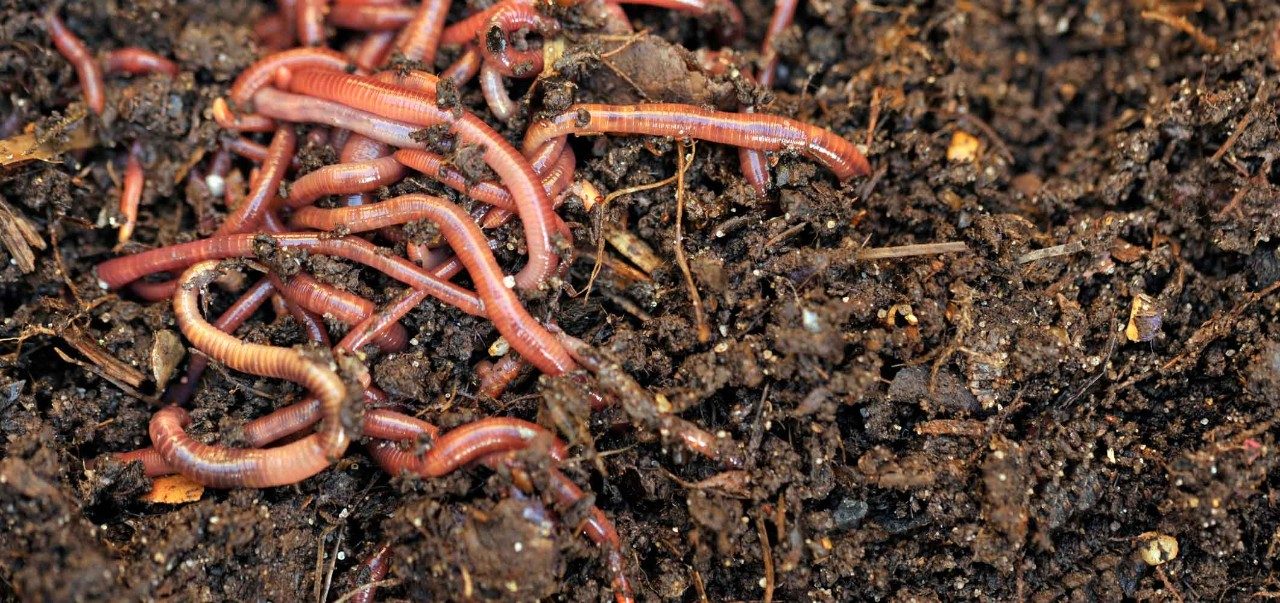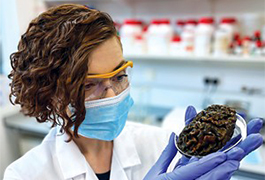Straight Outta Nature: Sustainable Catalysts

Most of the chemicals produced for industrial and consumer use come from finite resources, such as petroleum. Increasingly, scientists are looking for more sustainable and greener sources of useful chemicals. Recently Chemical & Engineering News described several catalysts derived from animals, vegetables, and minerals that could make processing more sustainable.
Animal: Enzymes from creepy-crawlies
Yan-Hong He and coworkers at Southwest University in Chongqing, China, are producing an all-natural catalyst by grinding up earthworms. Enzymes are macromolecular catalysts produced by plants and animals to speed the various reactions necessary for life. They come from renewable sources and are biocompatible, biodegradable, essentially nonhazardous, and non-toxic, says Roger A Sheldon, an expert in developing enzymes and greener process chemistry for fine chemicals and pharmaceutical industries.
The Southwestern University group found that powdered earthworms had sufficient quantities of key enzymes to catalyze a variety of reactions. Earthworms can be mass-produced anywhere in compost heaps, living off nothing more than garbage and crop wastes.
Among the enzymes that earthworms exude is a set of serine proteases called earthworm fibrinolytic enzymes. These enzymes are the active ingredients of medicinal extracts used in China for a range of applications, including treating a fever and improving cardiovascular health.
Enzyme purification can be expensive and time-consuming and generate a lot of waste, so He and coworkers began looking for practical ways to eliminate the purifications steps.
The researchers rinse common red worms from a worm farm and then puree them in a kitchen blender, He explains. Next, they centrifuge the pudding-like mixture and collect the supernatant liquid, which they dry and then grind into a powder.
He and co-workers first tested the earthworm powder in a Mannich-Michael reaction to prepare isoquinuclidines, which are nitrogen-containing heterocyclic molecules that are useful chemical intermediates. The researchers compared the powder’s abilities with those of commercially available lumbrokinase, one of the earthworm fibrinolytic enzymes, finding that using 100 mg of earthworm powder—the same amount as the purified enzyme—yielded equal results.
Vegetable: Metal harvest
Currently, the metals we use every day, as well as those used in industry, are obtained by mining. However, mining can have significant negative impact on the environment, such as groundwater and soil contamination, habitat loss, and sinkholes. Moreover, some economists estimate that we have extracted more commercially accessible metals from the earth than are left in the ground.
One solution is to take advantage of phytoextraction, also known as phytoremediation or agromining. In phytoextraction, “hyper-accumulators” are grown in contaminated areas to soak up metals in the soil. The plants are then harvested and incinerated to remove the toxic metals from the area.
Historically, the ash has been buried as a waste product, but Claude Grison and her coworkers at CNRS Laboratory of Bioinspired Chemistry & Ecological Innovations in France have been isolating a variety of metals from the ashes for use as industrial catalysts.
Antony van der Ent and James Vaughan of the University of Queensland have gone a step further, using the crude ash itself as a catalyst. The researchers have been promoting phytoextraction as a sustainable approach to sourcing metals
Mineral: Reduce, Reuse, Recycle
According to some origin-of-life theories, minerals may have served as the first catalysts of biological chemistry on Earth. Exposed metal ores or minerals known as zeolites and clays might have helped simple molecules coalesce to form biochemical building blocks—amino acids, nucleobases, and sugars.
Chemists today still rely on the catalytic prowess of zeolites, which are porous hydrated aluminosilicates spiked with a variety of metals. For example, zeolite Y is a natural mineral used in catalytic cracking to turn crude oil into useful chemicals, and the synthetic zeolite ZSM-5 is used for hydrocarbon isomerization and alkylation reactions.
But what about minerals that have already been dug up and used? “Red mud” is the highly alkaline, iron-rich sludge that is left over after aluminum oxide is extracted from bauxite ore. Currently, refining bauxite produces twice as much red mud as the desired alumina, making red mud a waste product in search of a use. Researchers at Utah State University’s USTAR Bioenergy Center and the Pacific Northwest National Laboratory found red mud to be a promising zeolite replacement in catalytic cracking.
Meanwhile, Sebastien Rauch and colleagues at Chalmers University of Technology have been extracting the catalytically-useful platinum, palladium, and rhodium from high-volume air particulate sampling in cities such as Boston and Mexico City. Other researchers have been isolating these useful metals from street dirt, sewers, and discarded catalytic converters.
Whether tapping into animals, vegetables, or minerals, researchers agree that the catalytic possibilities are endless.
This article is adapted from: A more natural approach to catalysts, Chemical & Engineering News, February 20, 2017. (95(8), pp. 26-32.




